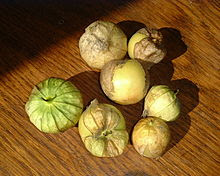 |
| Pears in our back garden |
The pears are everywhere. We had been keeping watch all summer for the moment when the pear tree in the back garden would provide us with luscious, ripe ready-to-eat pears.
When the birds started pecking at the fruit, we knew it wouldn't be long until the crop would be harvest ready. Mama birds must not teach baby birds to clean their plates, because birds never eat the whole fruit (which I wouldn't begrudge them), but they take random bites out of many pieces of fruit. It is always a race- who will get to the fruit first, the birds or the humans?
Wayne tries to convince me to pick the fruit when it is not quite ripe. He prefers crunchy pears; I don't. So I leave them on the tree until they are soft and wonderfully sweet. Unfortunately, this is also the point at which the pear tree decides to start dropping its fruit.
I wandered out to the back garden recently and found the ground littered with pears, none of which were edible because they were already rotting or had telltale signs of bird bites. I rushed into the house for a bowl to pick and save as many pears as possible, the purpose for which I hadn't a clue.
As I stood on tiptoe to search the tree for edible pears, a large pear came loose and bonked me right on top of the head. Should have worn a helmet for this dangerous work, I suppose. In a few minutes, my bowl was full of more pears than we could ever eat in one season.
Surely old reliable Joy of Cooking would have pear recipes. They have recipes for everything under the sun. I didn't want a labor intensive recipe, just something to get those pears off of the kitchen counter. There were recipes for pear turnovers, but I would have to make dough; several recipes had verbs like freezing, canning, and pickling, which was not what I had in mind for an afternoon's activity; and one was for Pear Pandowdy, which suggested that I should read about Slumps and Grunts on p. 693 before I made it (Does that sound good to you?).
 |
| Stuffed pears in baking dish |
In desperation, I checked out a recipe called "Stuffed Pears," which looked doable. And the result was an elegant looking dessert. Here is the original Joy of Cooking recipe with my adjustments.
Take four pears, peeled, cored and halved, mix together 1/2 cup honey and 2 tablespoons lemon juice, place the pear halves in a baking dish, and coat them with the honey mixture. I had red chile honey bought in New Mexico this summer, so I used that to give the dish a southwestern taste.
Next step is to mix together 1/4 cup golden raisins, 2 tablespoons chopped walnuts, 2 tablespoons Splenda, and 1 tablespoon lemon juice. I filled the cavities of the pear halves with the mixture and dusted them with more Splenda and cinnamon. I covered the dish with foil and baked it for 20 minutes at 350 degrees, then uncovered it and cooked about 15 minutes longer. The pears were supposed to be basted once or twice with the cooking juice, but who wants to open a hot oven when the outside temperature is still in the 80s?
Stuffed pears can be served at any temperature or refrigerated and reheated. I thought the dish had an autumn taste. Next time, I may find an excuse to top the pears with Ben and Jerry's vanilla ice cream.






